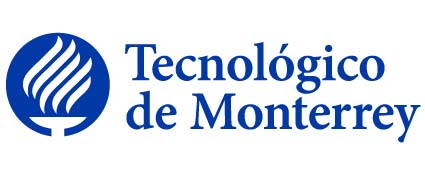
|
|||||
Disciplina asociada:Ingeniería Química |
|||||
Escuela:
Ingeniería y Ciencias
|
|||||
Departamento Académico:
Tecnologías Sostenibles y Civil
|
|||||
Programas académicos: |
|||||
Requisitos:(Haber Aprobado IQ2001 y Haber Cursado IQ2000) |
|||||
Equivalencia:IQ00852 |
|||||
Intención del curso en el contexto general del plan de estudios: |
|||||
|
Es un curso de nivel intermedio, que tiene la intención de que el estudiante conozca las herramientas necesarias para evaluar si una operación de separación o de reacción puede ocurrir a ciertas condiciones. Se apoyará mediante ejemplos los conceptos de desarrollo sostenible al utilizar los principios de partición entre medios al equilibrio en la predicción del destino final de contaminantes en el medio ambiente. Requiere conocimientos previos de balance de materia y energía, termodinámica, métodos numéricos, y cálculo diferencial e integral. Como resultado del aprendizaje el estudiante relacionará y modelará matemáticamente las condiciones de operación con la composición que alcanzarían los constituyentes de un proceso físico y/o químico en el equilibrio. |
|||||
Objetivo general de la Unidad de Formación: |
|||||
|
Al finalizar el curso el alumno será capaz de: - Calcular la presión y temperatura del equilibrio en los procesos con cambios de fase para compuestos puros y mezclas. - Evaluar la partición de los componentes entre las fases en el equilibrio. - Evaluar la composición al equilibrio para ciertas condiciones de operación en sistemas reaccionantes. - Calcular la presión y/o temperatura para obtener las composiciones deseadas en el equilibrio de un sistema reaccionante. |
|||||
Técnica didáctica sugerida: |
|||||
| No especificado | |||||
Bibliografía sugerida: |
|||||
|
LIBROS DE TEXTO: * Smith, J. M. (Joseph Mauck), Introducción a la termodinámica en ingeniería química, 7a ed., México : McGraw-Hill, spaeng, 0073104450 LIBROS DE CONSULTA: * Sandler, Stanley I., Chemical, biochemical, and engineering thermodynamics, 4th ed., New York : John Wiley & Sons, 2006, 0471661740 (t, 9780471661740 (tela: papel no a´cido) * Castellan, Gilbert William, Physical chemistry. Español\"Fisicoquímica", 2a ed. en español, Mexico : México : Pearson education, 1998, spa, 9684443161, 9789684443167 * De Nevers, Noel, Physical and chemical equilibrium for chemical engineers, New York : New York : Wiley, 2002, eng, 0471071706 (tela : papel alcalino) * Walas, Stanley M., Phase equilibria in chemical engineering, Massachusetts : Boston : Butterworth, 1985, eng, 0409951625 * Atkins, P. W. (Peter William), Fisicoquímica, 3a ed., Delaware : Wilmington, DW : Addison-Wesley Ib., 1991, spa, 0201629003 * Balzhiser, Richard E, Chemical engineering thermodynamics. Spanish\"Termodinámica química para ingenieros", New Jersey : Englewood Cliffs [N.J.] Prentice/Hall Internacional, 1973, 1974, spa, 0139067760 |
|||||
Perfil del Profesor: |
|||||
|
(140701)Maestría en Ingeniería Química ; (140701)Doctorado en Ingeniería Química CIP: 140701 |
|||||
|
|||||
Discipline:Chemical Engineering |
|||||
School:
Engineering and Sciences
|
|||||
Academic Department:
Sustainable and Civil Technologies
|
|||||
Programs: |
|||||
Prerequisites:( IQ2001 and IQ2000) |
|||||
Equivalences:IQ00852 |
|||||
Course intention within the general study plan context: |
|||||
|
This is an intermediate course intended to provide the required tools for evaluating if an operation of separation or reaction can occur under certain conditions. The concepts of sustainable development will be exemplified by using the principles of partition between media in equilibrium in predicting the final destination of contaminants in the environment. This course requires prior knowledge of material and energy balance, thermodynamics, numerical methods, and differential and integral calculus. The learning outcome of this course is for students to relate operating conditions to the composition attained by the constituents of a physical and/or chemical process in equilibrium through mathematical models. |
|||||
Course objective: |
|||||
|
Upon completion of this course, students will able to calculate the temperature and pressure of equilibrium in processes with phase changes for pure and mixed compounds; calculate the partitioning of components between phases in equilibrium; evaluate the composition at equilibrium for certain operational conditions in reactional systems; calculate the pressure and/or temperature necessary to obtain the desired compositions in the equilibrium of a reactional system. |
|||||
Teaching and learning tecniques: |
|||||
| Not Specified | |||||
Suggested Bibliography: |
|||||
|
TEXT BOOKS: * Smith, J. M. (Joseph Mauck), Introducción a la termodinámica en ingeniería química, 7a ed., México : McGraw-Hill, spaeng, 0073104450 BOOKS FOR CONSULTATION: * Sandler, Stanley I., Chemical, biochemical, and engineering thermodynamics, 4th ed., New York : John Wiley & Sons, 2006, 0471661740 (t, 9780471661740 (tela: papel no a´cido) * Castellan, Gilbert William, Physical chemistry. Español\"Fisicoquímica", 2a ed. en español, Mexico : México : Pearson education, 1998, spa, 9684443161, 9789684443167 * De Nevers, Noel, Physical and chemical equilibrium for chemical engineers, New York : New York : Wiley, 2002, eng, 0471071706 (tela : papel alcalino) * Walas, Stanley M., Phase equilibria in chemical engineering, Massachusetts : Boston : Butterworth, 1985, eng, 0409951625 * Atkins, P. W. (Peter William), Fisicoquímica, 3a ed., Delaware : Wilmington, DW : Addison-Wesley Ib., 1991, spa, 0201629003 * Balzhiser, Richard E, Chemical engineering thermodynamics. Spanish\"Termodinámica química para ingenieros", New Jersey : Englewood Cliffs [N.J.] Prentice/Hall Internacional, 1973, 1974, spa, 0139067760 |
|||||
Academic credentials required to teach the course: |
|||||
|
(140701)Master Degree in Chemical Engineering and (140701)Doctoral Degree in Chemical Engineering CIP: 140701 |
|||||